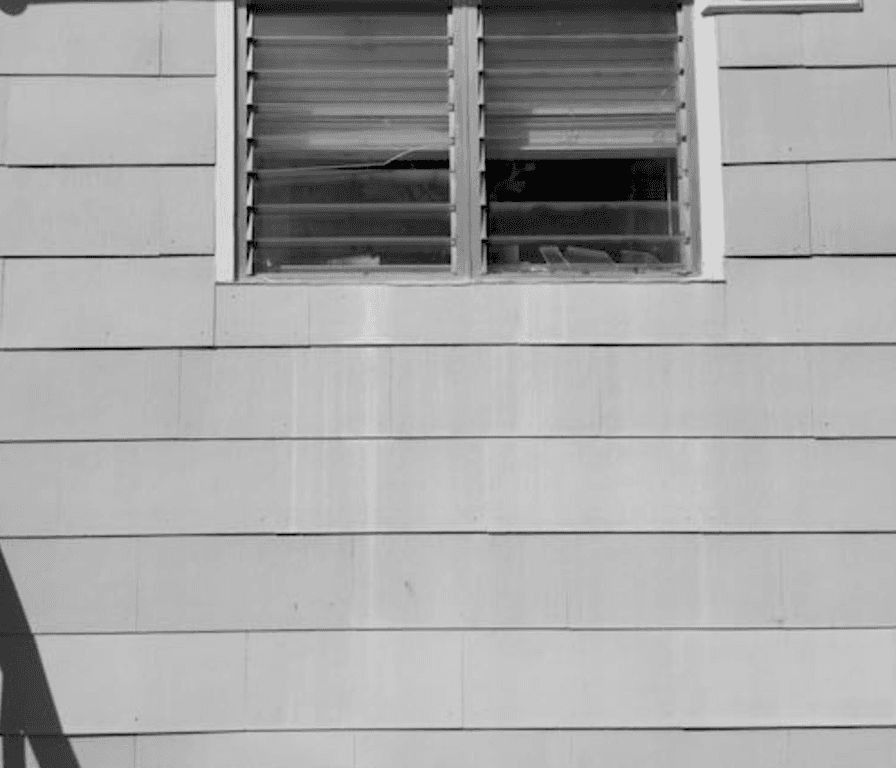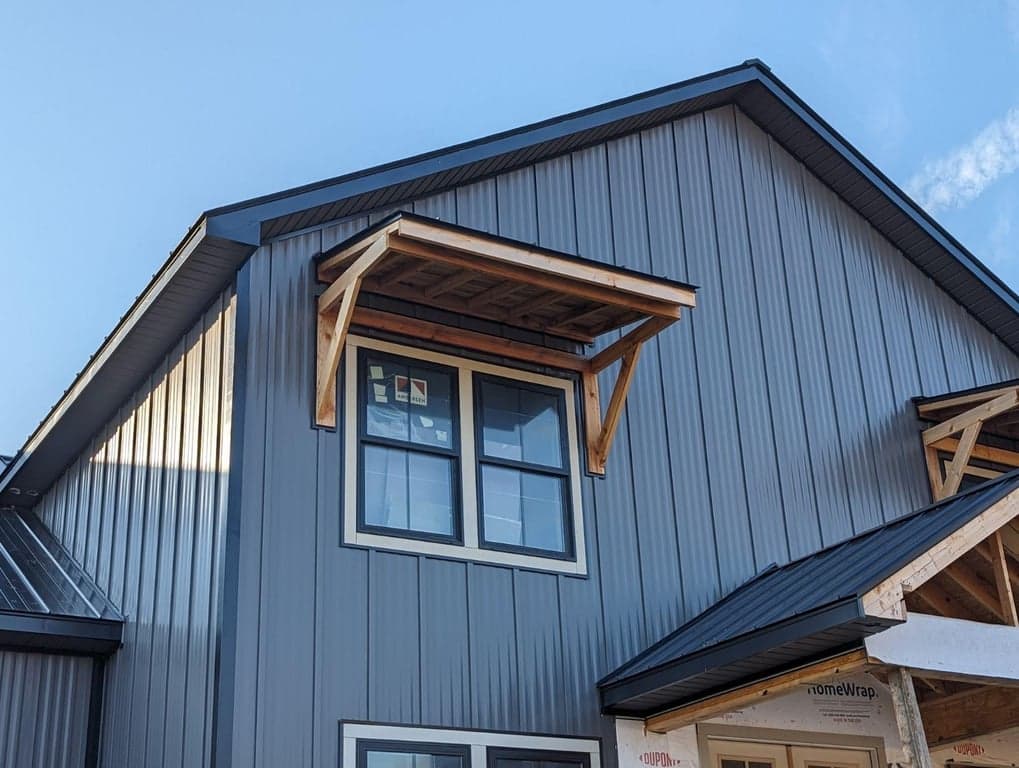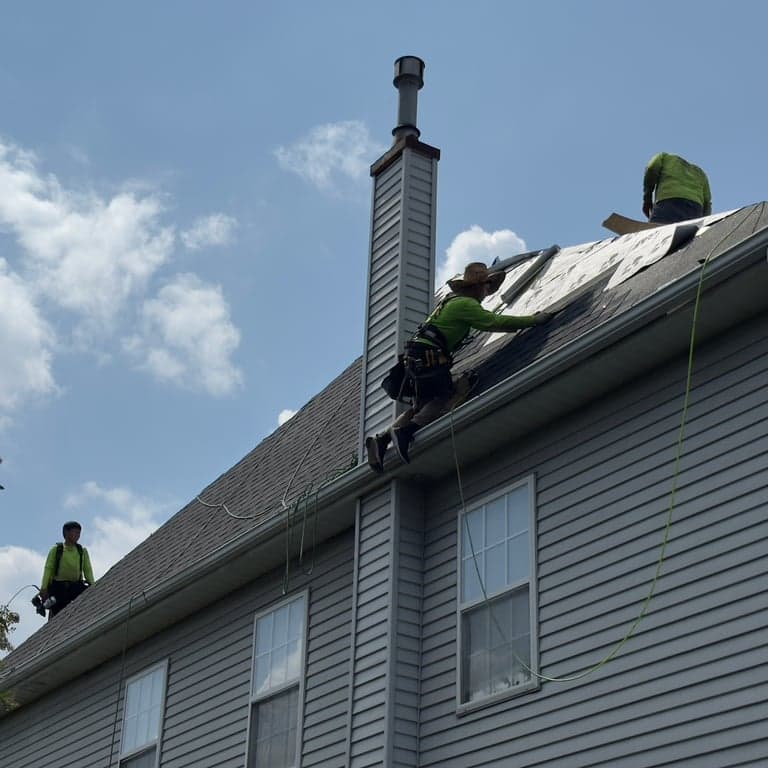How to Paint Aluminum Siding
TL;DR
Painting aluminum siding is absolutely possible and can give your home a fresh look without the cost of full siding replacement. The key is prep work — removing chalkiness, priming bare spots, and using the right acrylic paint. Expect to repaint in 7–15 years depending on prep, paint quality, and climate.
Can You Paint Aluminum Siding Yourself?
Yes! If your aluminum siding is structurally sound (no dents, warping, or corrosion), painting it is often a smart choice. Homeowners across Pennsylvania, New Jersey, and Delaware have aluminum siding that’s decades old but still solid. Instead of ripping it off, a fresh coat of paint can transform curb appeal for a fraction of the cost of new siding.

What Kind of Paint Do You Use on Aluminum Siding?
The best paint for aluminum siding is a 100% acrylic, water-based exterior paint. Acrylic paint provides elasticity, which allows it to expand and contract with the metal through the weather changes. Popular paint choices for painting aluminum siding include:
Benjamin Moore Regal Select or Aura (low lustre finish hides imperfections)
Sherwin-Williams SuperPaint Exterior Acrylic (long-lasting adhesion)
Benjamin Moore Moorguard (when paired with bonding primers like Emulsabond)
Avoid flat sheens — they chalk faster. Satin or low-lustre finishes tend to look better and hold up longer.
How to Paint Aluminum Siding Without a Roller
If you don't have a roller, that's ok. The best method is to use an airless paint sprayer. Sprayers give a smooth, even coat and work especially well on the grooves and seams of aluminum siding. The key is to prep the surface. Wash away all the chalk and dirt and let the siding dry fully. You can sand the siding or use a power wash. After the aluminum siding is prepped, apply two thin coats of 100% acrylic exterior paint. Just be sure to mask windows, doors, and landscaping carefully, since overspray can travel.
How to Paint Aluminum Siding Without Sanding
Yes, you can paint aluminum siding without sanding, but you cannot skip cleaning. The chalky residue on old aluminum paint is what prevents new paint from sticking. Instead of sanding, power wash the siding with a cleaner designed for exteriors, then let it dry completely. For areas where the paint is peeling or the bare metal is showing, use a bonding primer to lock the surface down. Once the siding is clean and primed, apply two thin coats of high-quality 100% acrylic exterior paint with a sprayer or roller. Done correctly, the finish will last 10–15 years without the mess and labor of sanding.
Do I Need to Prime Aluminum Before Painting?
Not always. If the existing paint is in good shape, a thorough cleaning may be enough. But if you see bare metal, chalky residue, or peeling areas, you’ll need a primer.
Chalky siding: Use a bonding primer (like Emulsabond) to lock down the surface.
Bare aluminum spots: Spot-prime to prevent oxidation.
Heavily weathered siding: Full primer coat may be needed for durability.
Skipping primer on problem areas is one of the biggest reasons paint jobs fail prematurely.
Is It Better to Spray Paint or Brush Paint Aluminum Siding?
Spraying almost always gives a smoother, more even finish, and it’s faster. Professionals use sprayers paired with back-rolling (light rolling after spraying) to ensure the paint bonds well.
Brushing and rolling is possible, especially for DIYers without access to a sprayer, but it takes much longer and can leave lap marks. If you’re aiming for a flawless look, spraying is the way to go.
Can I Paint Aluminum Siding Myself?
Yes, many homeowners do; but it depends on your comfort level. A DIY project can save thousands, but here’s what you’re up against:
Power washing: You must remove all chalk, mildew, and dirt first.
Surface prep: Scraping loose paint, sanding rough edges, spot priming.
Painting: Using high-quality acrylic paint (ideally sprayed).
Time & safety: Ladders, scaffolding, and a lot of labor.
Professional quotes for painting aluminum siding often run $8,000–$16,000 for an average-sized home. DIYers can get it done for a fraction of that in material costs.
How Long Will Painted Aluminum Siding Last?
If prepped and painted properly, painted aluminum siding can last 10–15 years before needing another coat. Some homeowners report shorter cycles (7–10 years) if prep was skipped or low-quality paint was used.
Climate matters, too. In PA/NJ/DE, where siding faces humidity, snow, and storms, prep and paint choice directly affect longevity.
Common Homeowner Questions
Is painting aluminum siding a bad idea?
Not at all, as long as the siding itself isn’t damaged. If your siding is chalky but solid, painting is usually worth it. If you want “maintenance-free,” new vinyl siding might make sense — but at 3–4x the cost.
Should I replace aluminum siding instead?
If your aluminum is dented, corroded, or you’re tired of repainting every decade, vinyl siding may be a better investment. Vinyl offers low maintenance and plenty of color options.
How much does it cost to paint aluminum siding?
DIY: $500–$1,500 in materials.
Pro job: $8,000–$16,000+ depending on home size.
What about ceramic coatings with lifetime warranties?
Some companies market ceramic coatings as “10x stronger than paint.” While they last longer, they’re usually less than vinyl siding but more expensive than paint. Get multiple quotes and check the fine print before committing.

Step-by-Step: How to Paint Aluminum Siding
Clean: Power wash or sand thoroughly to remove chalk, mildew, and dirt.
Repair: Scrape peeling paint, sand rough spots, caulk gaps.
Prime (if needed): Apply bonding primer to chalky or bare areas.
Paint: Apply 2 coats of high-quality acrylic paint. Spraying + back-rolling is best.
Inspect: Look for lap marks, missed spots, or thin coverage.
Local Tip (PA/NJ/DE)
Dark colors may show expansion lines in winter, where the siding contracts and reveals edges of the original light paint. It’s not a defect — just physics. From the street, it’s barely noticeable, but it’s worth knowing before you choose a deep color.
Final Thoughts
Painting aluminum siding is one of the best ways to refresh your home’s exterior without committing to full replacement. As long as the siding is in good shape, you can get another decade or more of use — at a fraction of the cost of new vinyl.
Related Posts

Everything You Need to Know About Asbestos Siding
Learn the risks, costs, and options for asbestos siding. Safe removal & replacement solutions for homeowners in Pennsylvania, New Jersey & Delaware.
Get Your Free Estimate Today
Paragon Exterior is revolutionizing the roofing and siding industry. We prioritize quality, trust, and complete transparency — and we’re proud to declare it: the outdated, frustrating aspects of this field are being discarded. At Paragon, we enhance everything that truly matters: communication, craftsmanship, and care. Our mission is straightforward — to be the ideal partner for homeowners before, during, and long after the project is finished. This is how roofing and siding should be: comfortable, honest, and stress-free.


